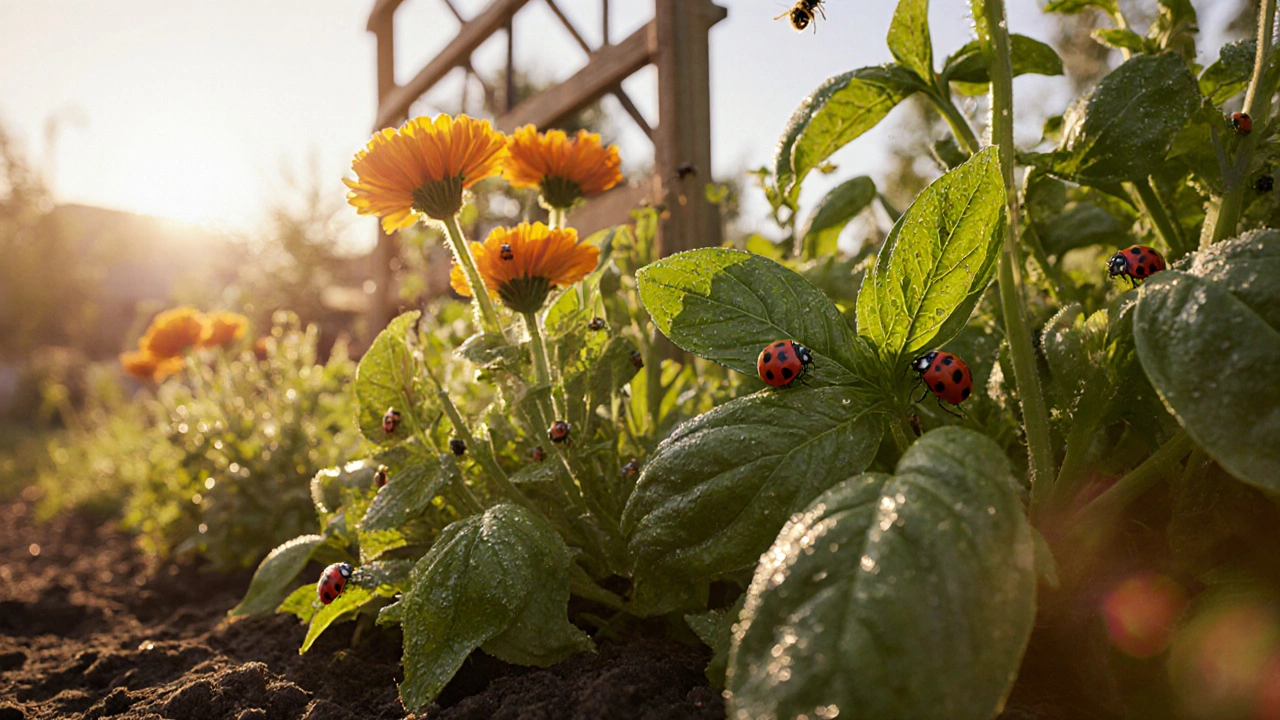Organic Pest Remedies for a Thriving Garden
When working with organic pest remedies, natural methods that control insects and diseases without synthetic chemicals. Also known as natural pest control, it helps keep soil life healthy and food safe for families. Organic pest remedies are especially important in India’s diverse climates where chemical runoff can damage water sources and beneficial wildlife.
Why go natural? The power of beneficial insects, predators like ladybugs, lacewings and parasitoid wasps that eat pest larvae
One of the first tools in an organic toolbox is the use of beneficial insects, natural predators that reduce pest populations. These allies require habitats – a few flowering herbs, a water source, and shelter – to stay in the garden. When you plant marigold or coriander, you provide nectar that attracts them, creating a self‑sustaining pest‑control network. Another cornerstone is neem oil, a cold‑pressed extract from neem seeds that acts as an insect repellent and growth inhibitor. Neem oil works best when applied early in the season, breaking the life cycle of aphids, whiteflies and leaf‑miners before they can cause damage. Together, beneficial insects and neem oil form a two‑pronged defense: one prevents infestations, the other quashes them.
Beyond insects, plant placement plays a big role. Companion planting, the practice of growing complementary crops side by side to deter pests leverages natural aromas and root exudates. For example, planting basil near tomatoes repels tomato hornworms, while radishes beside lettuce keep leaf‑miners at bay. The key attribute of companion planting is diversity: a varied garden confuses pests and reduces the chance that a single species will dominate. When you combine this with compost tea, a liquid brew made from steeped compost that adds beneficial microbes to the foliage, you boost plant immunity. Microbes from compost tea colonize leaf surfaces, outcompeting harmful fungi and creating a protective film.
All these methods link together through a simple principle: a healthy ecosystem naturally limits pest eruptions. Organic pest remedies encompass beneficial insects (predation), neem oil (chemical deterrence), companion planting (spatial strategy), and compost tea (microbial defense). In practice, you might start a season by scattering ladybugs, spray neem oil after a light rain, interplant basil with tomatoes, and finish with a weekly compost‑tea foliar feed. This chain of actions creates a feedback loop where each step strengthens the next, keeping pest pressure low without harming the environment.
Ready to see how these ideas work in real gardens? Below you’ll find step‑by‑step guides, dosage tips, and troubleshooting tricks that turn theory into results. Whether you’re growing on a balcony, a raised bed, or a full‑size kitchen garden, the articles ahead show how to apply organic pest remedies effectively, adapt them to local conditions, and keep your harvest healthy and chemical‑free.
DIY Natural Pest Control: Simple Home Remedies for a Bug‑Free Garden
Learn practical DIY natural pest control methods-from garlic spray to diatomaceous earth-plus recipes, safety tips, a comparison table and a handy checklist for a healthier garden.
About
Pest Control
Latest Posts


How to Take Care of Indoor Plants: Simple Tips for Thriving Houseplants
By Alden Thorne Aug 8, 2025

Disadvantages of Having a Balcony Garden
By Alden Thorne Mar 10, 2025

Eco-Friendly Home Designs: Building for a Sustainable Future
By Alden Thorne Dec 2, 2024

